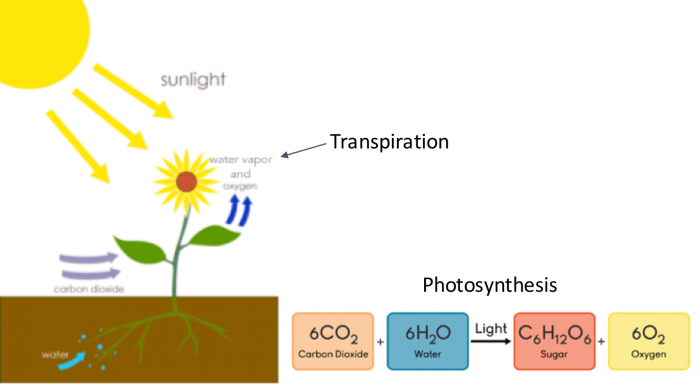Water is Essential for Food Production
Why do we need so much water for agriculture? Plants use a lot of water!
Plants need water to grow! Plants are about 80-95% water and need water for multiple reasons as they grow including for photosynthesis, for cooling, and to transport minerals and nutrients from the soil and into the plant.
"We can grow food without fossil fuels, but we cannot grow food without water."
Dr. Bruce Bugbee, Utah State University
We can't grow plants, including fruits, vegetables, and grains, without water. Plants provide food for both us and for the animals we eat. So, we also can't grow cows, chickens, or pigs without water. Water is essential to growing corn as well as cows!
Agriculture is the world's greatest consumer of our water resources. Globally about 70% of human water use is for irrigation of crops. In arid regions, irrigation can comprise more than 80% of a region's water consumption.
The movement of water from the soil into a plant's roots and through the plant is driven by an evaporative process called transpiration. Transpiration is just the evaporation of water through tiny holes in a plant's leaves called stomata. Transpiration is a very important process in the growth and development of a plant.
Water is an essential input into the photosynthesis reaction (Figure 4.1.2), which converts sunlight, carbon dioxide, and water into carbohydrates that we and other animals can eat for energy. Also, as the water vapor moves out of the plant's stomata via transpiration (Figure 4.1.2), carbon dioxide can enter the plant. The transpiration of water vapor out of the open stomata allows carbon dioxide (another essential component of photosynthesis) to move into the plant. Transpiration also cools the plant and creates an upward movement of water through the plant. The figure below (Figure 4.1.2) shows the photosynthesis reaction and the movement of water out of the plant's stomata via transpiration.
As water transpires or evaporates through the plant's stomata, water is pumped up from the soil through the roots and into the plant. That water carries with it, minerals and nutrients from the soil that are essential for plant growth. We'll talk quite a bit more about nutrients later in this module and future modules.

This drawing shows the sunlight shining down on a flower. The roots of the flower are in the soil and there is water in the soil. Carbon dioxide is going into the flower. Water vapor and oxygen are being released from the flower (Transpiration). The chemical formula for photosynthesis is shown as 6 CO2 (Carbon Dioxide) + 6 H2O (Water) an arrow representing light leads to C6H12O6 (Sugar) + 6 O2 (Oxygen).
